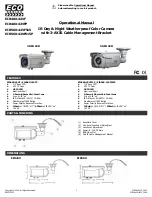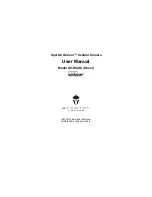
1-5
1
Overview
[4] Lead inspection
· Inspection procedure
1
Calculate the mid points (K1 to K4) of the leads along the inspection line.
2
Look for bent leads by comparing the difference between the maximum and
minimum distances of P1 to P3 .
3
Check the maximum and minimum length of the leads (L1 to L4).
K1
Lead
Inspection line
K2
K3
K4
P2
P1
P3
L4
· P1 to P3: Distance between
leads
· K1 to K4: Mid point of each
lead
· L1 to L4: Lead length
· Number of leads
· Detect missing or incorrectly
spaced leads
L1
L2
L3
[
Lead inspection
]
Detailed
instruc-
tion
· Operating instruction example
_
See “3-5 Lead inspection”
· Setting measurement program
_
See “9-6 Lead inspection”
Pur-
pose
Exam-
ple
Based on positional information obtained from the gray scale search function, inspect the
condition of IC leads and connector pins. (No. of detected lead pins: Max. 128 pieces)
Appli-
cation
Inspect IC leads or connector pins
[Inspect the layout of the IC leads or connector pins]
Workpiece
Detailed
instruc-
tion
· Operating instruction example
_
See
“3-1 Area measurement by binary conversion”
· Setting measurement program
_
See
“9-7 Area measurement by binary conversion”
• Inspection procedure
Pur-
pose
Exam-
ple
Appli-
cation
Detect the existence/absence and size of a workpiece when “the workpiece is one point” or
“measurement position is fixed.”
· Convert the specified pixel area to binary values and measure the size of the white area.
Check for the existence of bearings inserted by a bearing insert machine, prevent contam-
ination of different parts in automobile production lines, determine the type of water-proof
caps, check for the existence/absence of bottle labels, inspect the cuircuit traces on
PWBs, check for the presence of grease, check for existence of frozen foods.
Capture image
[Measured result]
• Workpiece area
Convert to binary values
Measure (area)
[5] Area measurement by binary conversion
















































